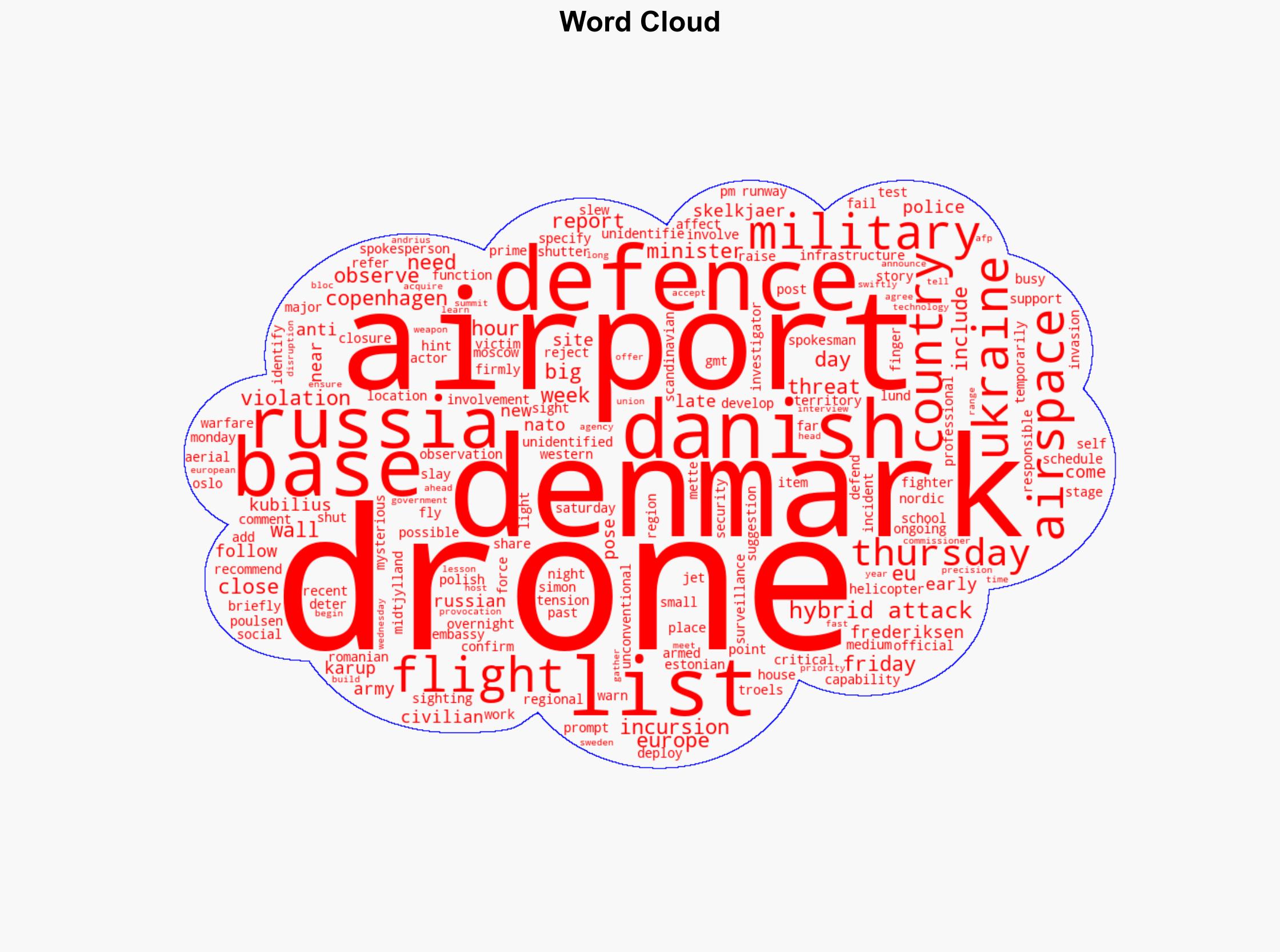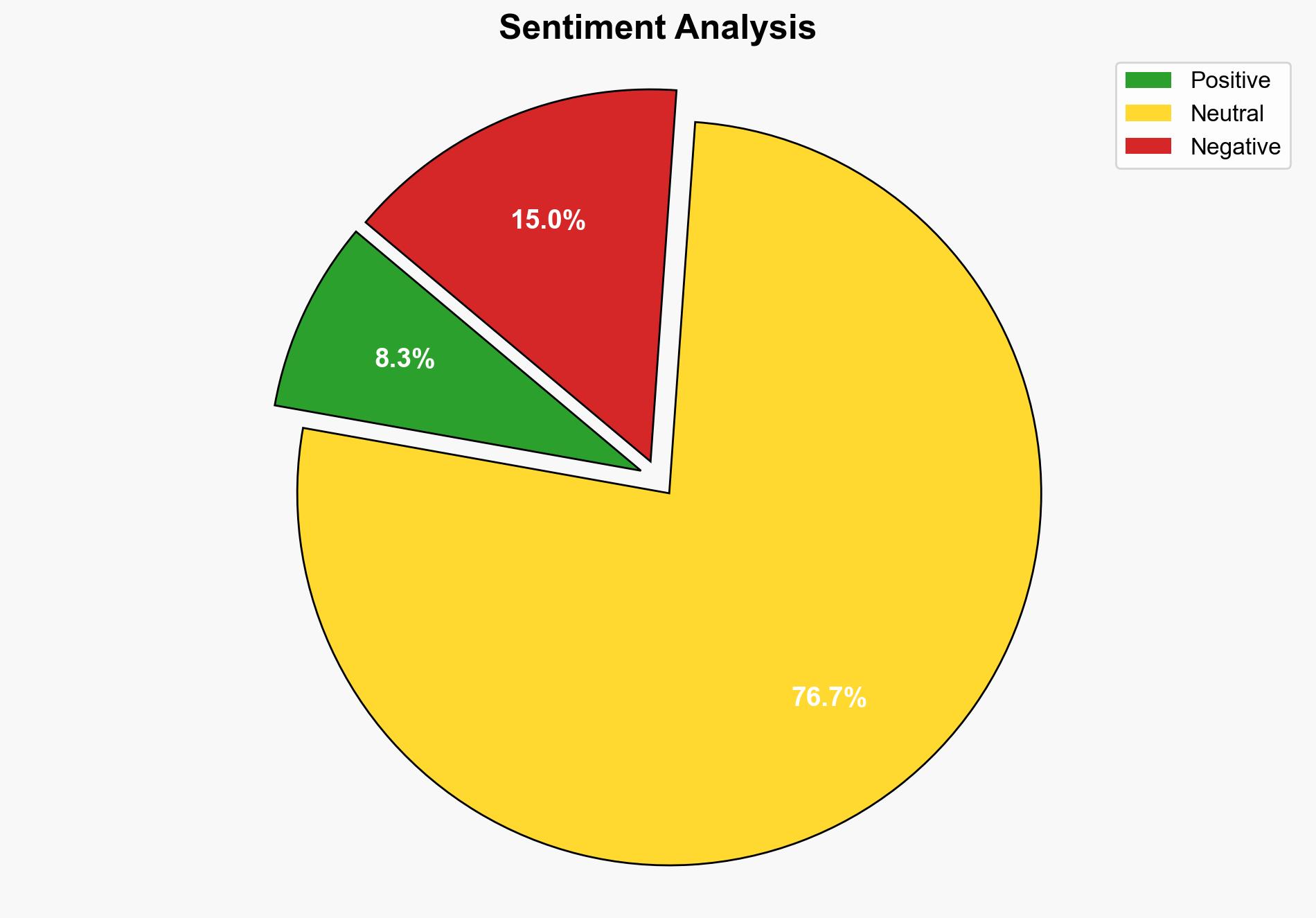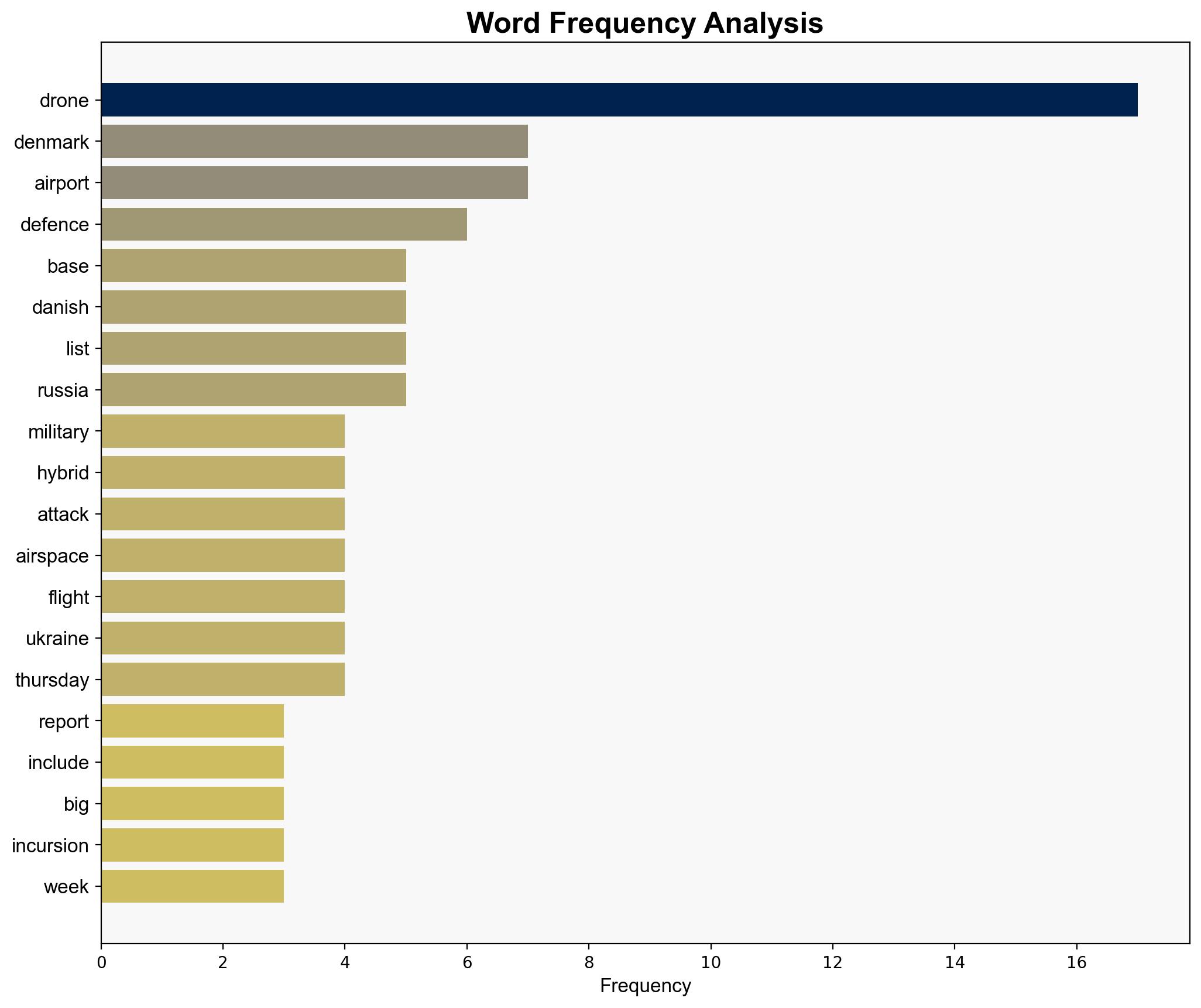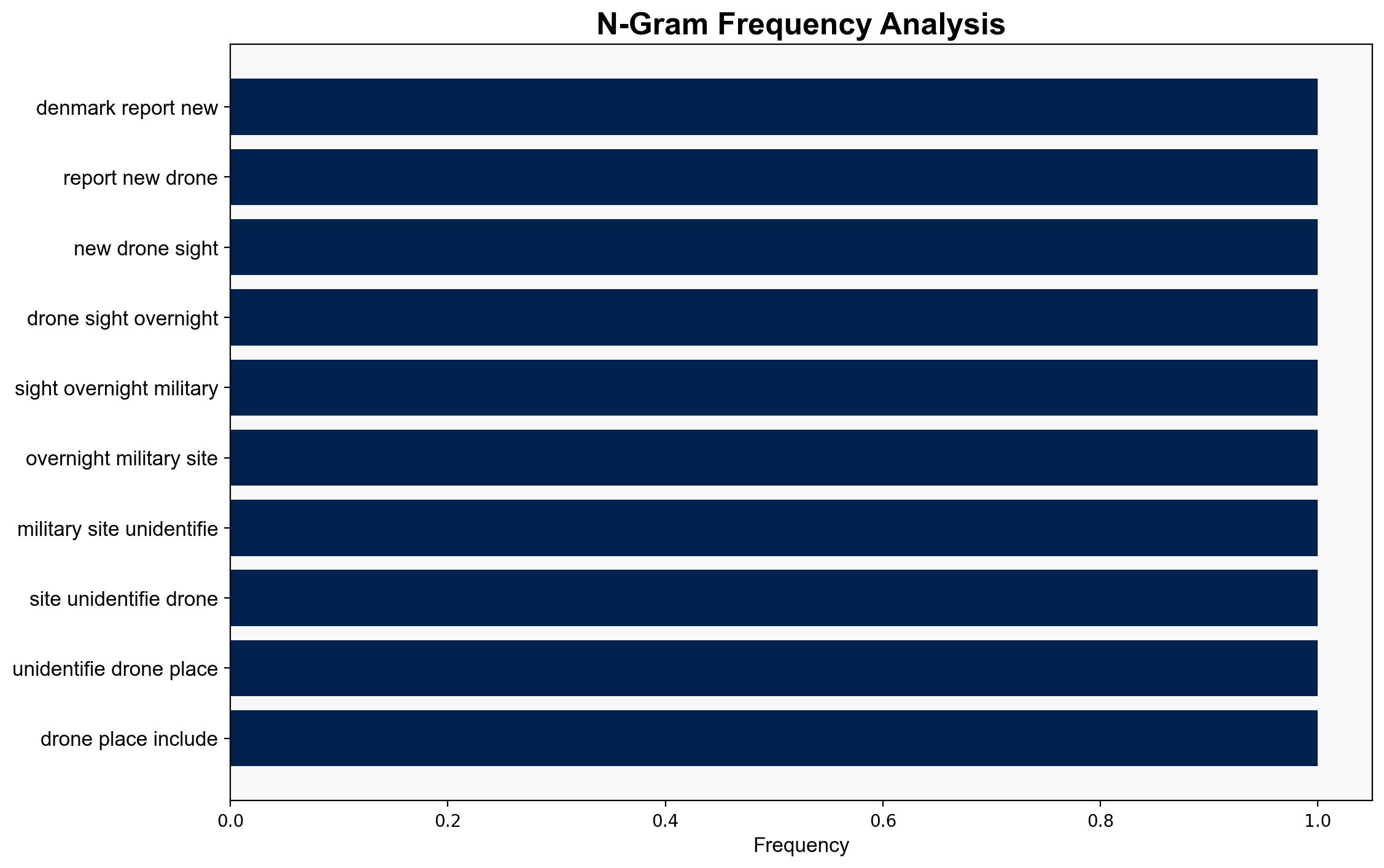Denmark reports new drone sightings overnight at military sites – Al Jazeera English
Published on: 2025-09-27
Intelligence Report: Denmark reports new drone sightings overnight at military sites – Al Jazeera English
1. BLUF (Bottom Line Up Front)
The most supported hypothesis is that the drone sightings in Denmark are part of a coordinated effort by an external state actor, likely Russia, to test NATO’s response capabilities and create strategic uncertainty. Confidence level: Moderate. Recommended action includes enhancing surveillance and defensive measures at critical infrastructure sites and engaging in diplomatic channels to address potential violations.
2. Competing Hypotheses
1. **Hypothesis 1**: The drone sightings are part of a hybrid warfare strategy by Russia to test NATO’s defenses and create strategic ambiguity in the region. This is supported by the timing of the sightings coinciding with Denmark’s announcement of acquiring long-range precision weapons and the history of Russian aerial incursions in Europe.
2. **Hypothesis 2**: The drone sightings are the result of independent actors, possibly non-state entities, conducting surveillance or testing new technologies. This could be motivated by economic or technological interests rather than geopolitical ones.
3. Key Assumptions and Red Flags
– **Assumptions**: Hypothesis 1 assumes Russian involvement based on historical patterns and geopolitical tensions. Hypothesis 2 assumes the presence of non-state actors with the capability to deploy drones in sensitive areas.
– **Red Flags**: The lack of concrete evidence directly linking Russia to the incidents. The possibility of misattribution due to cognitive biases or misinformation.
– **Inconsistent Data**: The absence of identified drone operators or recovered drones raises questions about the evidence supporting either hypothesis.
4. Implications and Strategic Risks
– **Geopolitical Risks**: Escalation of tensions between NATO and Russia, potentially leading to increased military posturing or conflict.
– **Economic Risks**: Disruption of air travel and potential impacts on regional economies due to airport closures.
– **Cybersecurity Risks**: The potential for drones to be used in cyber-espionage or cyber-attacks on critical infrastructure.
– **Psychological Impact**: Heightened public fear and uncertainty, potentially affecting public opinion and policy decisions.
5. Recommendations and Outlook
- Enhance airspace monitoring and drone detection capabilities at military and civilian sites.
- Engage in diplomatic dialogue with Russia and other relevant parties to address airspace violations.
- Conduct joint NATO exercises to improve response capabilities to hybrid threats.
- Scenario Projections:
- Best Case: Identification and neutralization of the drone operators, reducing regional tensions.
- Worst Case: Escalation into a broader military conflict involving NATO and Russia.
- Most Likely: Continued drone sightings leading to increased security measures and diplomatic efforts.
6. Key Individuals and Entities
– Mette Frederiksen
– Troels Lund Poulsen
– Andrius Kubilius
7. Thematic Tags
national security threats, cybersecurity, counter-terrorism, regional focus





